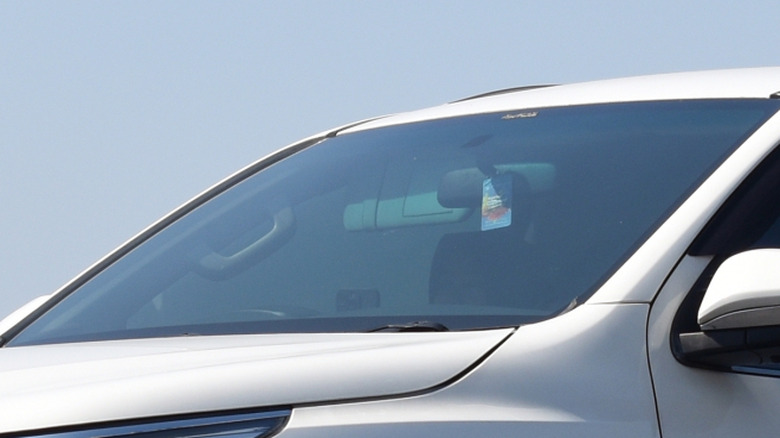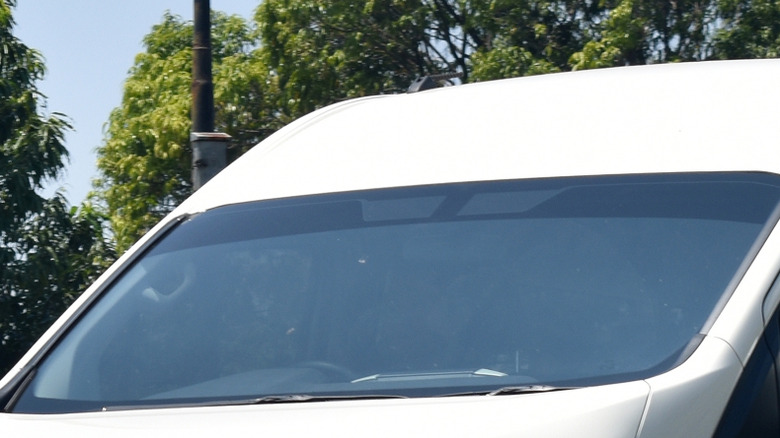Why Do Some Windshields Have A Purple Tint?
Your vehicle's windshield does far more than protect you from unpredictable elements and bugs. It shields your body from dangerous collisions during an accident, helps you see the road ahead, and even prevents the roof from collapsing. But beyond these benefits, windshields also offer other perks depending on the type of glass installed. Most modern vehicles usually use laminated glass, as it's strong enough to withstand impacts. Other high-end models — like the Tesla Model X — even come with panoramic windshields that protect you from harsh elements, while offering improved visibility.
That said, if you've ever noticed a windshield with a purple tint and wondered what purpose it serves, you're definitely not alone. At first glance, you might think that the subtle hue is a random design hue made for aesthetic purposes. But in reality, this purple tint is a result of actual science (and some clever engineering) behind it. As it turns out, some manufacturers usually equip their cars with infrared-reflective windshield glass that can exhibit a purple hue when viewed from outside and under certain lighting conditions. And while this might seem like a cosmetic glitch, it comes with added benefits as well. Since it's capable of reflecting UV rays, it helps reduce the amount of heat your vehicle absorbs.
UV rays can also lead to a purple window tint
Now, not all purple tints are a result of IR-reflective windshield glass. Some are unintentional. In fact, if you've ever owned (or own) an old car, you might have noticed a sudden purple hue creeping across your windshield. Sure, it can be disappointing to see your dark laminate film turn into a purple shade. But what could be the cause of your windshield tint turning purple?
One of the biggest culprits is prolonged exposure to UV radiation and sunlight. When you park your car under the sun for extended hours, UV rays will penetrate the window film, breaking down the chemical dyes used for tinting. As the tint fades, it often becomes purplish — a clear sign that the film isn't functioning correctly. So, a faded film may let in more light and heat instead of protecting you from UV rays.
To protect your windshield from degrading, it's best to invest in high-quality tints that are strong enough to protect your windshield from harmful UV rays. Ceramic and carbon window tints are highly recommended as they have unparalleled UV protection capabilities. On top of that, they are durable and give your car a sleek aesthetic. Additionally, you should consider cleaning your windshield regularly, as it will help reduce the speed of the degradation process.

